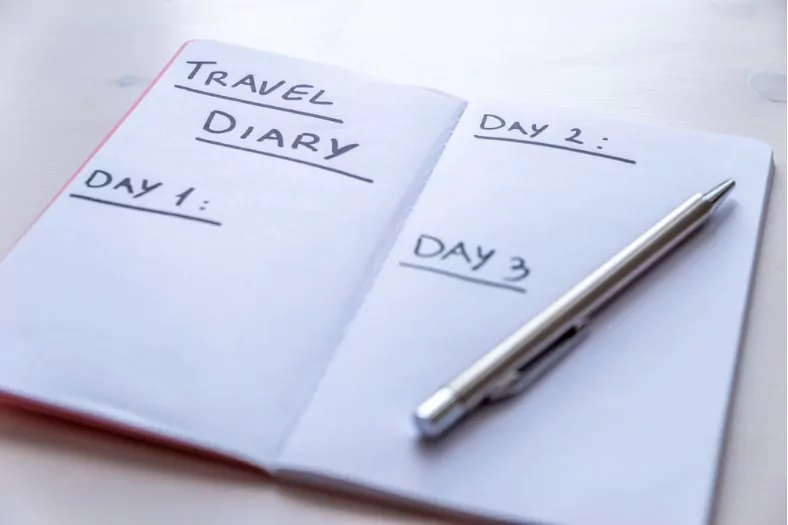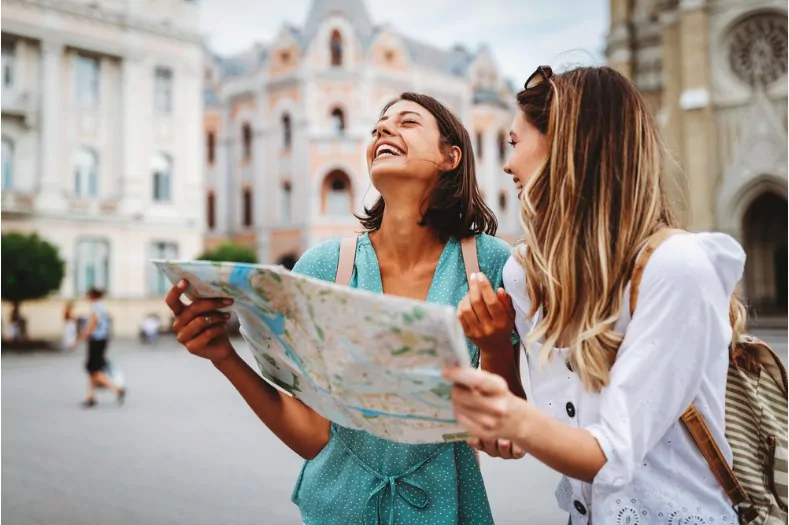The Wanderer’s Guide: How To Write Travelogue?

Travel is a transformative experience. It offers a fresh perspective on the world, introduces us to new cultures, and challenges our boundaries. But for those who love to write, it’s also an opportunity to chronicle our adventures and share them with the world. Enter the travelogue.
Whether you’re a budding travel writer or someone who wants to share an epic journey with friends and family, this guide will teach you how to write travelogue that captivates your readers. We’ll delve into the format of a travelogue, provide a travelogue sample, and offer numerous travelogue ideas to inspire you.
1 What is a Travelogue?

Simply put, a travelogue is a written account of a person’s journey to a particular place or region. It can be factual and informative or personal and reflective. Through this medium, writers not only describe the landscapes, people, and cultures they encounter but also their own feelings and experiences.
2 Why Write a Travelogue?
Before we dive into the how-to, it’s essential to understand the why. Writing a travelogue allows you to:
- Relive and reflect on your experiences.
- Share and inform others about a particular place.
- Offer a unique perspective or insight that might not be found in traditional travel guides.
3 Format of a Travelogue
One of the first things to nail down when you’re planning to write a travelogue is its format.
Here’s a general structure to help you:
Introduction
Set the scene. Why did you choose this destination? What inspired the trip?
Main Body
- Day-to-Day Events: Offer a chronological breakdown of your trip.
- Highlights and Lowlights: Share the best and worst parts of your journey.
- Cultural Experiences: Dive into the local customs, food, and festivities.
- Personal Anecdotes: Your personal experiences and emotions add depth to your narrative.
Conclusion
Reflect on your journey. Would you visit again? What did you learn?
Now, let’s explore each section in detail.
Introduction:
Here, you set the stage for your readers. Begin with a hook – an interesting incident or a striking description of the place. For instance, “As I stood atop the Eiffel Tower, Paris stretched before me like a shimmering sea of lights, and I felt an emotion I hadn’t anticipated.”
Main Body:
Day-to-Day Events: It’s often useful to follow a chronological order, as this allows readers to follow your journey seamlessly. For example, “Day 1: Arriving in Bali; Day 2: Exploring Ubud Markets”, and so on.
Highlights and Lowlights: No trip is perfect. Share the good with the bad. For instance, your visit to the Great Wall of China might be a highlight, while getting lost in Tokyo’s metro could be a lowlight.
Cultural Experiences: This section allows readers to immerse themselves in the locale’s unique culture. “In India, I participated in the vibrant festival of Holi, where the streets became canvases of colour.”
Personal Anecdotes: Personal stories, like an unexpected friendship or an amusing mishap, can make your travelogue relatable.
Conclusion:
End by reflecting on your overall experience. It’s an excellent opportunity to leave your readers with a lasting impression or a thought-provoking message.
Now, for those wanting a clearer picture, let’s dive into an example of travelogue.
4 Travelogue Sample: Journey Through Kyoto
Introduction:
Kyoto, the ancient capital of Japan, had always fascinated me. Its blend of historic temples with modern city life promised a journey of discovery. My goal was to immerse myself in its rich cultural tapestry.
Journey:
My train ride from Tokyo was a mix of excitement and contemplation. As the urban landscapes transformed into the serene countryside, I met a local artist sketching the passing scenery, reminding me that inspiration can be found everywhere.
Destination Description:
Kyoto, with its narrow streets, hidden temples, and wooden machiya houses, was a feast for the eyes. The golden Kinkaku-ji shimmered under the sun, while the rock gardens of Ryoan-ji offered meditative tranquillity.
People and Culture:
It was in Gion, the geisha district, where the cultural heartbeat of Kyoto was most palpable. Watching a maiko (apprentice geisha) performance, with their graceful dance and soulful music, was an ethereal experience.
Personal Experiences:
My most treasured memory was attending a traditional tea ceremony. The meticulous process, from the way the tea was whisked to the etiquette of drinking, spoke volumes about Japan’s reverence for the art of living.
Conclusion:
Kyoto was more than just a trip; it was a lesson in history, culture, and the art of mindfulness. I left with a renewed appreciation for traditions and a promise to return.
5 Travelogue Ideas to Get You Started

If you’re wondering where to begin, here are some travelogue ideas to inspire your writing:
- Focus on the culinary journey of a place.
- Dive into the history and myths of a destination.
- Chronicle a journey of self-discovery.
- Highlight the natural wonders of a region.
- Share stories of the locals you’ve met.
6 Tips for Writing a Travelogue

Start with Pre-trip Research
Before embarking on your journey, have a clear idea of the places you’ll be visiting. Dive deep into the history, culture, and significance of these locations. This will provide context when you pen down your experiences.
Maintain a Daily Journal
Even if you plan to write a travelogue post-trip, maintaining a daily journal ensures you don’t forget intricate details. Note down the sights, sounds, and even smells. These notes will serve as a format of a travelogue when you compile your final document.
Capture Vivid Descriptions
The more descriptive and vivid your writing, the more you’ll be able to transport your readers. For instance, instead of writing “The beach was beautiful”, you could describe “The golden sands shimmered under the gentle embrace of the setting sun, as waves kissed the shore with a rhythmic dance.”
Incorporate Personal Experiences
A travelogue is personal. It’s not just about the places but also about your experiences. Maybe you tried a new dish, made a local friend, or faced a challenging situation. These personal touches add depth.
Include Pictures and Sketches
A picture speaks a thousand words. Visuals, be it photographs or sketches, make your travelogue vibrant and relatable.
Talk about the Locals
Interactions with locals can offer profound insights into the culture, traditions, and ethos of a place. They’re the soul of any destination. Share conversations or anecdotes to provide a holistic view.
Offer Practical Information
A great travelogue is not just about beautiful narratives; it also offers value. Share practical information like places to stay, foods to try, or local transportation tips.
Draft, Revise, and Polish
Your first draft is seldom your best. Revise to enhance clarity, eliminate redundancies, and ensure flow. Proofread for grammar, punctuation, and spelling errors.
Share with Peers for Feedback
Before publishing, share your travelogue sample with friends or peers. They might offer valuable feedback or catch errors you missed.
Publish and Share
Once you’re satisfied, publish your travelogue. Whether it’s on a personal blog, magazine, or social media, sharing allows others to benefit from your experiences.
7 Wrapping Up
Writing a travelogue is a rewarding endeavour. It’s a way to revisit your experiences, share them with others, and offer a perspective that’s uniquely yours. Remember the keywords: example of travelogue, travelogue examples, write a travelogue, format of a travelogue, travelogue sample, and travelogue ideas. These will guide your structure and inspire your content. With passion and authenticity, your travelogue could easily find its way to the coveted Google’s first page!
Remember, every journey offers a story. It’s up to you to pen it down. Safe travels and happy writing!
Community Q&A
About This Article
This article has been viewed 383 times.



